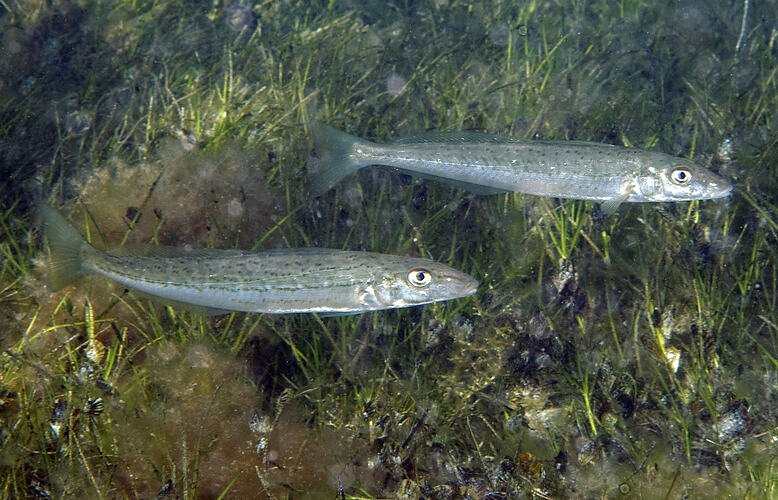General Description
Body very slender, not greatly compressed, with a slightly rounded upper surface, two low dorsal fin separated only at their bases, tiny scales, a long snout long and a small mouth. Colour variable, from greenish-grey to silvery-brown above with distinctly darker spots sometimes forming wavy lines, silvery-white below; juveniles with many bands along the sides. Usually 40 cm long head to tail tip (up to 72 cm).
Biology
This very important and popular commercial and recreational fish is the largest whiting species in Australia, and is an excellent table fish. Juveniles are common in seagrass beds in sheltered bays and estuaries, and moving into deeper water at about 10 cm in length. King George Whiting feed mostly on bivalve molluscs, polychaete worms and crustaceans.
Distribution
Southern Australia.
Habitat
Coastal regions with seagrass, weed or sand, especially within bays.
More Information
-
Animal Type
-
Animal SubType
-
Brief Id
Body long and slender, brownish above, silvery-white below, with small dark spots and wavy lines.
-
Habitats
-
Diet
Carnivore
-
Diet Categories
Crustaceans, Worms
-
Endemicity
-
Commercial
Yes
-
Conservation Statuses
CITES: Not listed, FFG Threatened List: Not listed, EPBC Act 1999: Not listed, IUCN Red List: Not listed
-
Depths
Shallow (1-30 m)
-
Water Column Locations
On or near seafloor
-
Taxon Name
-
Scientific Author
(Cuvier, 1829)
-
Common Name
King George Whiting
-
Kingdom
-
Phylum
-
Subphylum
-
Superclass
-
Class
-
Order
-
Family
-
Genus
-
Species Name
punctatus



